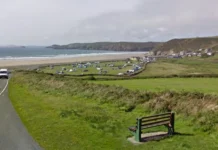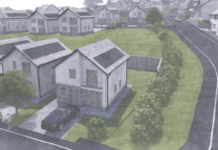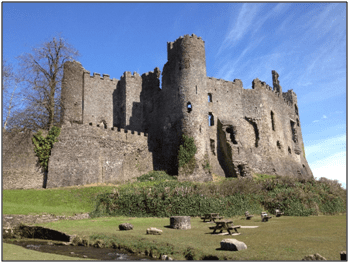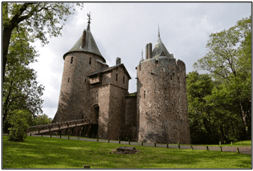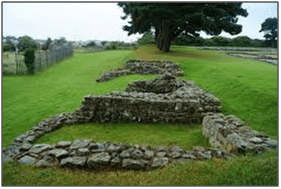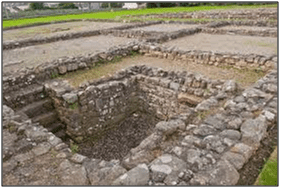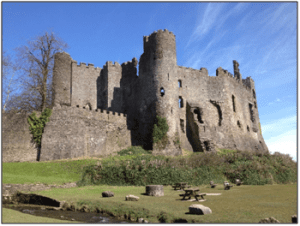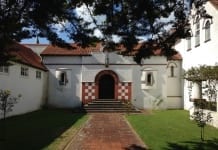Although extremely small compared to many other countries around the globe, Wales is not only an interesting and beautiful place to visit, it is also steeped in achievements and I say this for very good reasons. As a nation, we are incredibly proud of our heritage and our contribution to the world of poetry and literature, music and art, invention and design, sport and entertainment and most undeniably, our wonderful Welsh sense of humour. In short, we are a nation of high achievement and worldwide recognition.
When I travel around our country I am always at my happiest because that is when I truly appreciate our history andall the stimulating aspects that come along with it, such as our magnificent and imposing castles which are all a ‘must see’ and leads me onto my first interesting fact. Wales has been home to over six hundred castles and fortresses in her time and of these, over one hundred still remain and many are so well preserved, they attract an average of one million visitors each year.
From the 19th century Gothic style Castell Coch near Cardiff, which stands on the site of a former 11th century Norman castle to the grandest of all namely Caernarfon Castle wherein 1969, HRH Prince Charles was invested as the Prince of Wales, we are so fortunate to have these ancient monuments. And it is for this very reason that I always say that Wales is a top rate custodian of our past.
My second interesting fact is that Wales has more castles per square mile than any other country in the world and it is little wonder that on my travels to visit these wonderful strongholds, I often hear people ask why are there so many. To provide a comprehensive answer to such a question would take me hours but in short,one answer is that we Welsh historically were a real headache to those who tried to invade and conquer our land. Just ask the English.
Before I talk about the more well-known castles of North Wales which, were kindly built by our neighbours onthe other side of Offa’s Dyke, let me give a brief insight into the early groups who settled across Wales post the Middle Stone Age period. These groups are shown below along with approximate dates:
Offa’s Dyke
- Iberians 2,000 BC – 800 BC – Bronze Age and from central Europe
- Brythons 800 BC – AD 50 – Iron Age and the first Celts.
- Romans 43 BC – AD 410
- Anglo-Saxons AD 446 – AD 1066
- Normans AD 1066 – AD 1154
Of the hill forts constructed by the Iberians and subsequently the Brythons, only a small number of sites have survived which, is unfortunate given that it is from such archaeological digs and field studies, that we learnand understand more about past cultures. There is a well-preserved Iron Age site at Llanmelin near Chepstow which archaeologists and historians believewasconstructed by the Silures, the tribal Celtic people who occupied south east Wales and English counties of Gloucestershire, Worcestershire and Herefordshire. Other fine examples can be seen at Sudbrook and Thornwell in Monmouthshire.
To the west of the Silureswere their Celtic neighbours the Demetae, who settled across Pembrokeshire and Carmarthenshire and gave their name to the former country of Dyfed. To their north were the Ordovices, again a Celtic tribe who settled across North Wales and of these three tribes, it is the Silures who put up the fiercest opposition to the mighty military occupying force that first arrived on our shores in 43 BC, under the command of General Aulus Plautius who in time, would become the first Roman governor of Britain. It is from this period that we have well-preserved sites across Wales,or Cambria as it was called by the Romans,and anyone wishing to see any of these should visit Caerleon, Caerwent, Caer Gybi, Cae Gar, Tomen-y-Mur, Dolgellau, Forden Gaer, Poulton and Chester in Cheshire. There are others,and most are free.
Segontium, Caernarfon
It is the magnificent castles built by a certain English king that will always be the peoples’ favourite and this, is where Ican best answer the question as to why so many castles were built in Wales.
During the 13th and 14th centuries, Welsh princes and English kings competed relentlessly for control and power and one king in particular, devoted much of his time, effort and money into creating an impregnable network of formidable castles. That king was Edward I (known also as ‘Longshanks’ and ‘Hammerer of the Scots’) and during his reign, Wales was divided between Welsh principalities (territories) and powerful Anglo-Norman lords, but it was Edward who succeeded where other English kings before him failed. By defeating Llywelyn ap Gruffudd, he put an end to Welsh independence and the size of principalities reduced almost to insignificance. Edward finally controlled Wales.
As one of the most effective of all English monarchs, he endured fighting against the Scots, Welsh and French and in Wales, he constructed the mighty castles of Beaumaris, Caernarfon, Conwy, Criccieth, Harlech and Flint. Edward employed the best architects including John of St George and in doing so, changed the English approach to fortresses by makingcastles easier to defend by simply constructing three ringed high-walled defences around a central courtyard, rather than the placing the stronghold directly at the centre. This design, known as ‘concentric’ worked well and Caernarfon Castle is an excellent example to understanding why.
Laugharne Castle, built by in 1116
Another innovation Edward introduced was to have castle walls built around the heart of each site, namely the town itself and one reason for doing this was because he used English builders and artisans in their thousands. Such workers were essential to Edward’s plan and had to be protected so their workplaces and homes were all encompassed within what was now known as ‘town walls’. Other castles built during Edward I’s reign can be seen at Aberystwyth, Rhuddlan and Builth.
In Carmarthenshire we have Carreg Cennen Castle first built by Lord Rhys around 1197, Carmarthen Castle built by Walter, Sheriff of Gloucester around 1100, Dryslwyn Castle built by a Welsh prince around 1220, Llandovery Castle first built in 1114 before being rebuilt by the Normans, Llansteffan Castle built by the Normans around 1200 and Laugharne Castle, first built in 1116 before being rebuilt by the Normans and Tudors. There is also Kidwelly Castle, Newcastle Emlyn Castle, Dinefwr Castle, Betws Castle and Castell Moel about two miles south west of Carmarthen and has a manor house ruin.
So why not take a drive one day and visit some of these amazing relics from our past because in Wales, we really are spoilt for choice.
Help keep news FREE for our readers
Supporting your local community newspaper/online news outlet is crucial now more than ever. If you believe in independent journalism, then consider making a valuable contribution by making a one-time or monthly donation. We operate in rural areas where providing unbiased news can be challenging. Read More About Supporting The West Wales Chronicle














